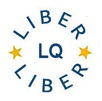Automating Registration of Digital Preservation Copies: The Place of Registries in the Digitization Workflow
DOI:
https://doi.org/10.18352/lq.7903Abstract
I would like to thank LIBER and EBLIDA for inviting me to present this paper on the role of registries in the digitization workflow. During the past 18 months, OCLC has been working on a project to synchronize WorldCat with mass digitization projects, which we will begin to pilot shortly. The concept is to educate WorldCat about the millions of new digital manifestations for print items being produced. During the past 35 years, librarians have built a comprehensive representation of print materials and holdings in WorldCat item-by-item. However, as we move into a more digital world through the production of born-digital materials and the high-volume reformatting of our print heritage, it is impractical to catalog these new manifestations via traditional workflows. The OCLC eContent Synchronization program is one example of how OCLC is moving to address the need to ingest metadata representing digital works on an industrial scale. Through strategic alliances with key digital content producers and automated processing, new digital surrogate records will be created to increase the visibility of and access to content at the point of need. While the eContent Synchronization program is an important initiative for visibility and access, of equal importance is the process of registering the existence of the preservation copies of these digital items.Downloads
Download data is not yet available.

Published
2008-03-06
Issue
Section
Articles
License
Copyright (c) 2008 William Carney

This work is licensed under a Creative Commons Attribution 4.0 International License.
How to Cite
Carney, W. (2008). Automating Registration of Digital Preservation Copies: The Place of Registries in the Digitization Workflow. LIBER Quarterly: The Journal of the Association of European Research Libraries, 18(1), 39-48. https://doi.org/10.18352/lq.7903





